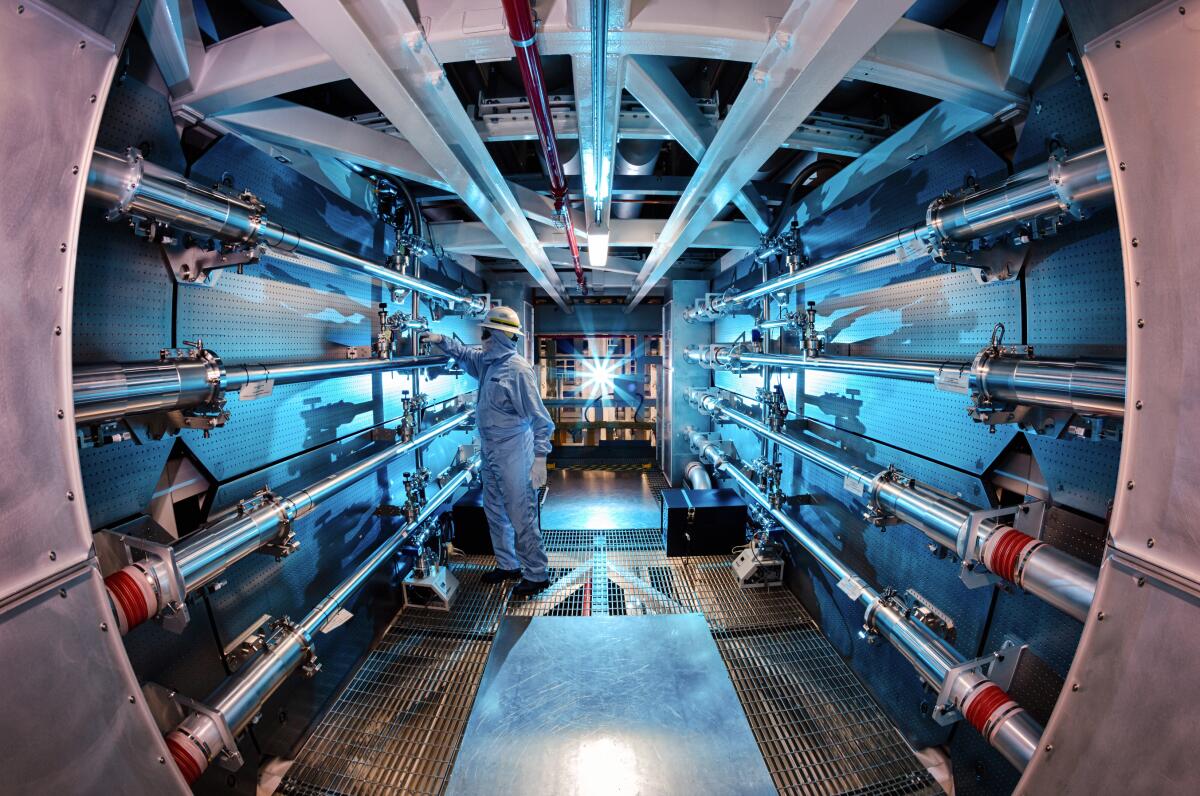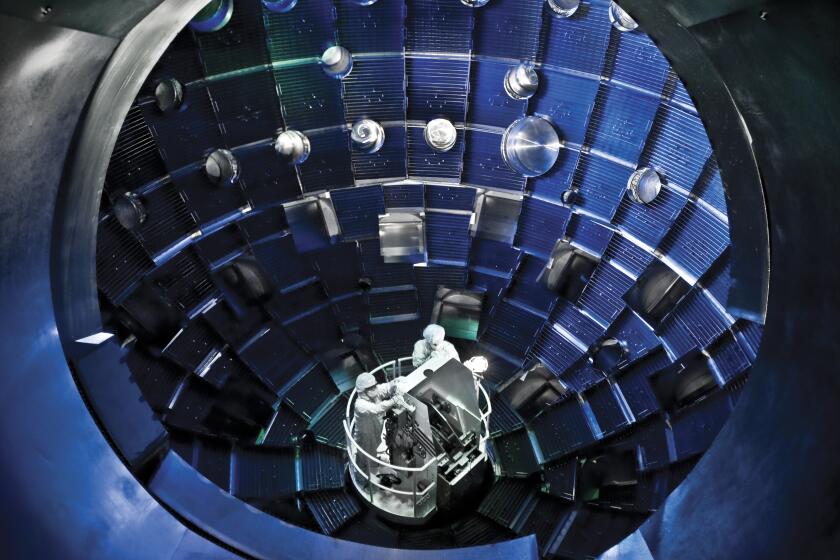Why nuclear fusion could be a clean-energy breakthrough

- Share via
Researchers at the Lawrence Livermore National Laboratory in California for the first time produced more energy in a nuclear fusion reaction than was used to ignite it, the Energy Department said Tuesday.
The long-sought goal of achieving net energy gain is a “major scientific breakthrough,” officials said.
The technology has the potential to one day accelerate the planet’s shift away from fossil fuels, which are the major contributors to climate change. But scientists have long struggled with daunting challenges.
Here’s a look at exactly what nuclear fusion is, and some of the difficulties in turning it into the cheap and carbon-free energy source that scientists believe it can be.
What is nuclear fusion?
Look up — it’s happening right above you! Nuclear fusion reactions power the sun and other stars.
The reaction happens when two light nuclei merge to form a single heavier nucleus. Because the total mass of that single nucleus is less than the mass of the two original nuclei, the leftover mass is energy that is released in the process, according to the Department of Energy.
In the case of the sun, its intense heat — millions of degrees Celsius — and the pressure exerted by its gravity allow atoms that would otherwise repel each other to fuse.
Scientists at Lawrence Livermore National Laboratory say they’ve produced a nuclear fusion reaction that generated more energy than it required to ignite.
Scientists have long understood how nuclear fusion works and have been trying to duplicate the process on Earth since the 1930s. Current efforts focus on fusing a pair of hydrogen isotopes — deuterium and tritium — according to the Department of Energy, which says that particular combination releases “much more energy than most fusion reactions” and requires less heat to do so.
How valuable would this be?
Daniel Kammen, a professor of energy and society at UC Berkeley, said nuclear fusion offers the possibility of “basically unlimited” fuel if the technology can be made commercially viable. The elements needed are available in seawater.
It’s also a process that doesn’t produce the radioactive waste of nuclear fission, Kammen said.
How are scientists trying to do this?
One way scientists have tried to re-create nuclear fusion involves what’s called a tokamak — a doughnut-shaped vacuum chamber that uses powerful magnets to turn fuel into a superheated plasma (between 150 million and 300 million degrees Celsius) where fusion may occur.
The Livermore lab uses a different technique. Researchers fire a 192-beam laser at a small capsule filled with deuterium-tritium fuel. The lab reported that an August 2021 test produced 1.35 megajoules of fusion energy — about 70% of the energy fired at the target. The lab said several subsequent experiments showed declining results, but researchers believed they had identified ways to improve the quality of the fuel capsule and the lasers’ symmetry.
“The most critical feature of moving fusion from theory to commercial reality is getting more energy out than in,” Kammen said.







